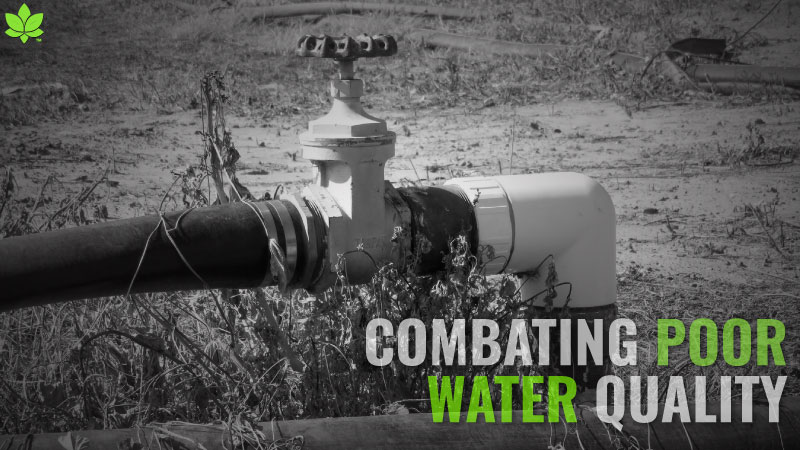How To Determine Disease Or Disorder In Peppers
Peppers, like many other vegetable crops, are susceptible to physiological disorders, diseases, and viruses over the course of the growing season. Growers of both hot and bell peppers need to understand what their plants are experiencing in the field in order to reduce yield loss.
Physiological Disorders
Some prevalent physiological disorders in peppers are blossom end rot, sunscald, and stip.
Blossom End Rot: A main symptom of blossom end rot is a water-soaked spot which is found on the blossom end or side of the fruit. The size of the spot increases, dries out, and becomes sunken and leathery over time.
This disorder is caused by a localized calcium deficiency which is initiated when calcium levels are deficient or, more commonly, when fruit is growing rapidly and soil moisture is inadequate. To avoid blossom end rot, keep soil calcium levels within optimal ranges and use good moisture management.
Sunscald: This disorder occurs when fruit are exposed to high heat and light. Tissue becomes damaged and bleached. Green mature fruit is susceptible. To avoid sunscald, select cultivars with good leaf coverage of the fruit and take steps to avoid plant lodging.
Staking can decrease sunscald by supporting plants upright and minimizing lodging. When plants lodge, fruit can be exposed to direct sun resulting in sunscald.
Stip: Not observed as commonly as blossom end rot or sunscald, stip symptoms are dark, slightly sunken spots on fruit. (Stip means specks in German.) The exact cause of stip is unknown, but low calcium and high nitrogen and potassium are thought to be contributing factors. To avoid stip, have a good nutrient management plan. Cultivar selection also is important in managing stip. Experiments are currently being conducted to learn more about which bell pepper cultivars are susceptible to stip.
Disease Patrol
Phytophthora blight, bacterial spot, and anthracnose are common diseases encountered in pepper production.
Phytophthora blight: This devastating disease unfortunately has been very prevalent in recent years. Symptoms include water-soaked, dark lesions that appear on lower stems which can girdle stems. Plants can suddenly wilt and can rapidly die. Leaves can develop dark- green, water-soaked lesions which dry and become light tan. Fruit develop greenish-brown, greasy-appearing spots that can enlarge until the entire fruit is affected.
Cultural management strategies include the use of resistant cultivars, good crop rotation, sanitation, good soil drainage, and good moisture management.
Bacterial Spot: Symptoms of bacterial spot are brown, circular, water-soaked spots on leaves with no concentric zones or halos. Spots can merge and form long, dark streaks. Severe epinasty or downward bending of leaves may occur.
Cultural management strategies include using resistant cultivars, disease-free seedlings, and good crop rotation. Maintain good nutrient management and turn crop residue into the soil quickly after final harvest to promote its breakdown and minimize overwintering of the bacteria in the field.
Anthracnose: Symptoms of this disease include sunken, circular spots on ripe or ripening fruit or leaves. The centers of the spots develop black spores over time. Cultural management strategies include practicing sound crop rotation and removing fruit at early stages of infection from the field. Â
Â









